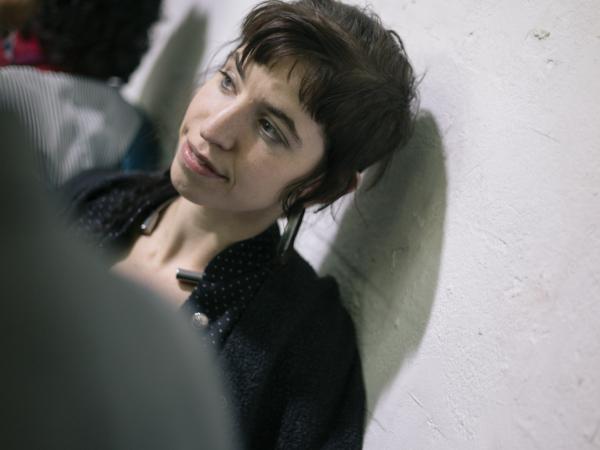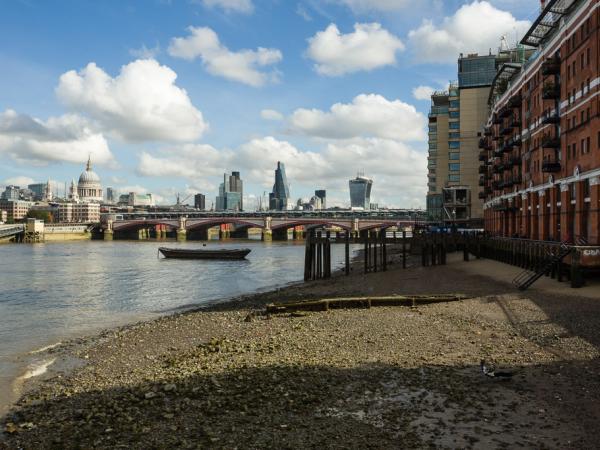OPHEN VIRTUAL ART GALLERY SPACE
Anthological exhibition by Paolo Scirpa
"In the form of light in search of infinity"
Works 1965-2017
curated by Sandro Bongiani
From 9 October to 28 November 2021
Inauguration: Saturday 9 October 2021 at 6.00 pm
"No one, so far, has gone to the bottom of these holes to tell us what he saw".
Bruno Munari, 1980
A large anthology entitled: "In the form of light in search of the infinite" will be inaugurated on Saturday 9 October 2021 at 18.00, which the Bongiani Art Museum Collection of Salerno dedicates to the Italian artist Paolo Scirpa, with works created between 1965 and 2017 spread over two exhibitions, respectively in the “Sandro Bongiani VRspace” gallery and at the “Spazio Ophen Virtual Art Gallery” in Salerno.
91 works are presented including Ludoscopes, paintings, plastic ideas, urban projects and installations. His initial research was born in the 1960s as a moment of perceptual-kinetic research between abstraction and lyricism. In 1965 the painting "Composition" is a mature work with a vision of the landscape characterized by an unusual displacement and decentralization. Thus also the subsequent works of the "Sun" and "Habitat" provisionally defined between form and artificial construction. At the beginning of the seventies the first Ludoscopes were born, now in line for originality and creativity with the different contemporary trends carried out in that period in the international field. The works of the "Ludoscopes", created in the early seventies do not highlight the void as an "absence" but as an essence and insubstantial presence not yet defined and yet visible in the intimate dimension of the space. Sandro Bongiani writes, “… a condition, one would say suspended, with a temporary temporariness, shattered and reduced to pieces, born to be“ infinite ”. An insubstantial vision of incorporeal presences that take shape thanks to the use of real light. The virtual containers with a primary shape, thanks to the use of neon light and mirrors, transform and alter the geometric shape, dramatically multiplying the functionality in a synthetic space-light ". With the "Intervention projects in the territory" of the Eighties there is the clear need to analyze one's own personal poetic vision in a new key of investigation using a different approach and dimensional relationship to verify the feasibility of the proposed thing. From the incessant investigation of the intervention projects, in 2009, the projects of the "Theater is its double" will be born, wooden models imagined on the shape of the Greek theater like that of Syracuse where Paolo Scirpa lived for some time before moving in Milan, born from an obscure and indefinite movement of the imagination between form, invention and history. In over 50 years of assiduous and obsessive research, the artist has been able to investigate the various possibilities of doing research and combine the unknown with transitory events of the "non-place" with decidedly very conciliatory and surprising solutions. In this sense, all of Scirpa's work can be critically traced back to the bed of a much larger and more majestic project on the borders of the disciplinary thresholds and still fully current and viable.
OPENING: Saturday 9 October 2021, 6.00 pm
Sandro Bongiani | Bongiani Art Museum Collection
For the occasion, a catalog will be published with a critical anthology with all the texts written in recent years for Paolo Scirpa.
Paolo Scirpa / Biography
http://www.paoloscirpa.it/index.php?disp=biog
Paolo Scirpa was born in Syracuse in 1934. He immediately showed his aptitude for art by entertaining painting studies between Palermo and Catania, also frequenting the graphic workshops in Salzburg for a long time where he met John Friedlander in whose studio he would later work in Paris. In '65 he moved to Milan where he created the first "Sun" works linked to a lyrical expressionism but already oriented towards a formal synthesis. In 1972 he created “Megalopoli Consumistica” a consumerist denunciation work consisting of a large quantity of assembled empty wrappers and containers. Scirpa's work has always tended towards an inner search, disconnected from any relationship of belonging. In the 1970s he moved from a two-dimensional iconography to the modularity of an object space that light and mirrors transform into a polygonal one. His research is oriented towards a dimension in which light and space become immaterial and spectacular protagonists. It was in 1972 that the Master began the creation of Ludoscopes, three-dimensional works that, by means of a system of combinatorial neon and mirrors, propose the perception of fictitious depths, true hyperspaces-light in which the limit between the real and the illusory. It was in these years that Scirpa met and frequented the exponents of optical-kinetic art and MAC, including Maestro Bruno Munari who, within his writings, will also highlight the playful aspect of the artist's work. In his Ludoscopes, the artist is interested in representing not so much real light as "ideal" light, that is, the idea of infinity.
In the 1980s, the first design interventions began in the area, gigantic Ludoscopes were introduced, through photomontages, in: buildings, monuments, archaeological sites and cities, creating dizzying perspectives within the landscape. Even today Scirpa continues its research and experimentation work proposing works and projects that are always current and avant-garde.
The master's works have been exhibited in many personal and collective exhibitions as well as being present in important private and museum collections such as: MAGA (Gallarate), Museo del Novecento (Milan), Civiche Raccolte Bertarelli - Castello Sforzesco (Milan), Brera Library ( Milan), MACTE Museum of Contemporary Art (Termoli), MART-VAF-Stiftung (Trento and Rovereto), MAGI '900 Museum (Pieve di Cento), MAPP Paolo Pini Art Museum (Milan), Musée des Beaux-Arts (Caen), Museum Ritter (Waldenbuch), Civic Museum of Contemporary Art (Gibellina), Museum (Bagheria), Chiaramontane factories (Agrigento), National Gallery of Modern Art (Rome), Gallerie d'Italia (Milan).
Essays and critical annotations have dedicated to his work: Riccardo Barletta, Pietro Baj, Carlo Belloli, Luigi Bianco Guglielmo Boselli, Giorgio Bonomi, Rossana Bossaglia, Ginevra Bria, Domenico Cara, Luciano Caramel, Silvio Ceccato, Jacqueline Ceresoli, Claudio Cerritelli, Cesare Chirici , Vittoria Coen, Andrea Del Guercio, Mario De Micheli, Marina De Stasio, Giorgio Di Genova, Gillo Dorfles, Vittorio Fagone, Ornella Fazzina, Pedro Fiori, Carlo Franza, Sabino Frassà, Carmelo Genovese, Flaminio Gualdoni, Sara Liuzzi, Annette Malochet, Corrado Maltese, Gabriel Mandel, Giorgio Mascherpa, Luigi Meneghelli, Marco Meneguzzo, Marta Michelacci, Bruno Munari, Carlo Munari, Antonio Musiari, Daniela Palazzoli, Demetrio Paparoni, Francesco Poli, Pierre Restany, Roberto Sanesi, Giorgio Segato, Carmelo Strano, Luigi Tallarico , Francesco Tedeschi, Carlo Terrosi, Maria Torrente, Antonino Uccello, Miklos N. Varga, Alberto Veca, Francesco Vincitorio, Maurizio Vitta, Emanuele Zucchini. He was a teacher at the Brera Academy of Fine Arts. He lives and works in Milan.
SANDRO BONGIANI VRSPACE
OPHEN VIRTUAL ART GALLERY SPACE
Via S. Calenda, 105 / D - Salerno
From 9 October to 28 November 2021
Inauguration: Saturday 9 October 2021, 6.00 pm
Open all day every day from 00.00 to 24.00
Gallery https://www.sandrobongianivrspace.it/
http://www.collezionebongianiartmuseum.it
email: bongianimuseum@gmail.com
Office Press: Ophen Virtual Art Archive Tel. 3937380225






Comments 0
Say something